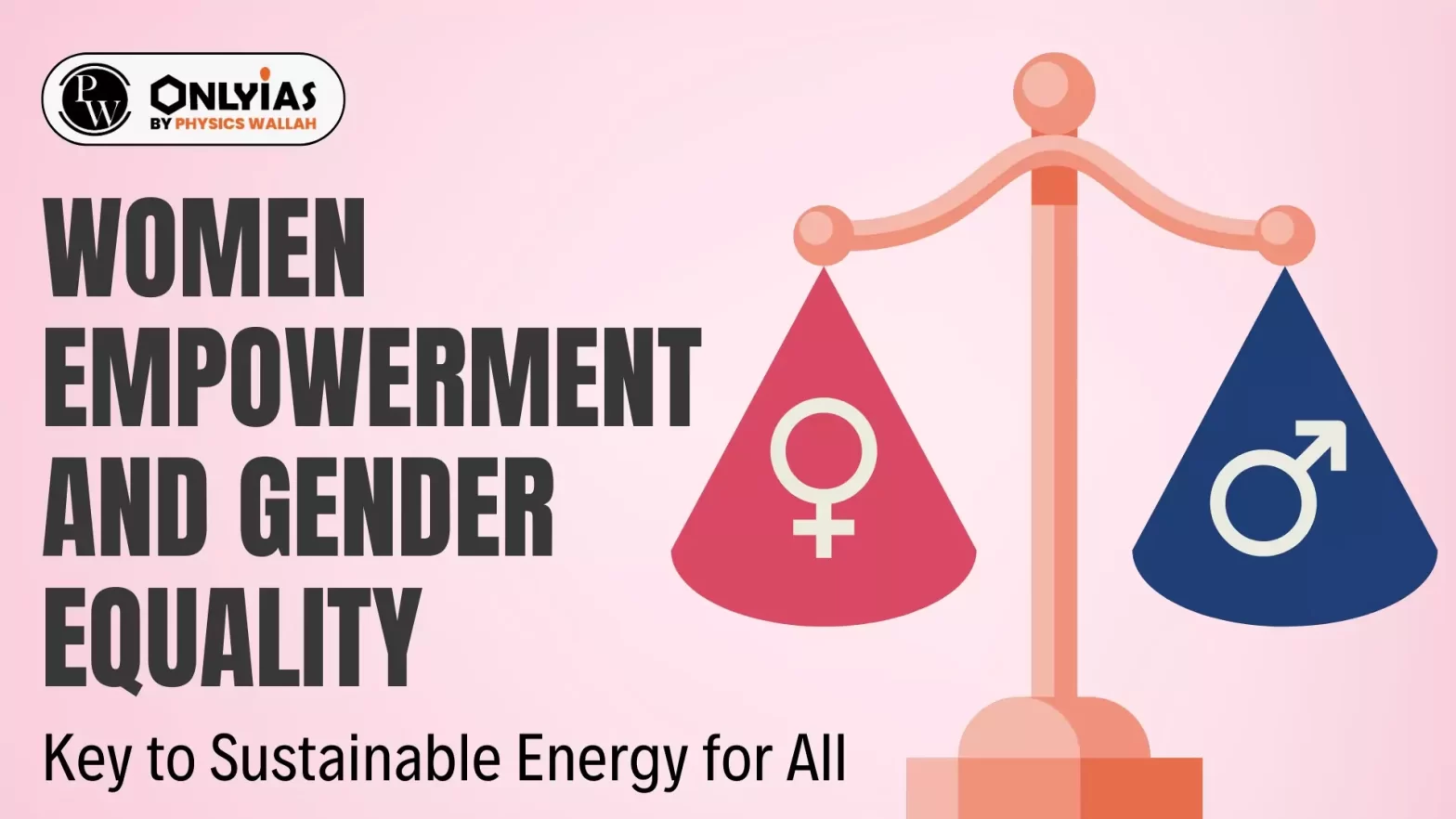![]() 9 Mar 2024
9 Mar 2024

This editorial is based on the news “Gender equality as the plank of sustainable development” which was published in the Hindu. Women Empowerment and Gender Equality are fundamental to achieving sustainable energy for all.
| Relevancy for Prelims: World Energy Outlook 2023, Women Empowerment Schemes, and Sustainable Development For India’s Future.
Relevancy for Mains: Women Empowerment and Gender Equality in the Energy Sector. |
|---|
Gender equality and Sustainable Development:
|
|---|
It is evident that empowering women in energy sector is not just the right thing to do. It is also a smart investment in our collective future.
| Prelims PYQ (2017):
Which of the following gives ‘Global Gender Gap Index’ ranking to the countries of the world? (a) World Economic Forum (b) UN Human Rights Council (c) UN Women (d) World Health Organization Ans: (a) |
|---|
| Mains Question: Women empowerment in India needs gender budgeting. What are the requirements and status of gender budgeting in the Indian context? (150 words, 10 marks) |
|---|
| Must Read | |
| NCERT Notes For UPSC | UPSC Daily Current Affairs |
| UPSC Blogs | UPSC Daily Editorials |
| Daily Current Affairs Quiz | Daily Main Answer Writing |
| UPSC Mains Previous Year Papers | UPSC Test Series 2024 |

<div class="new-fform">
</div>